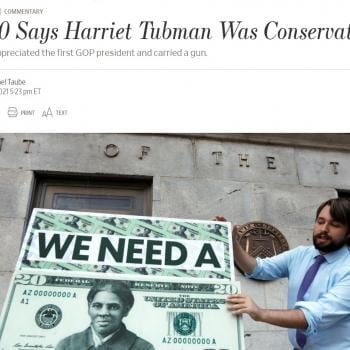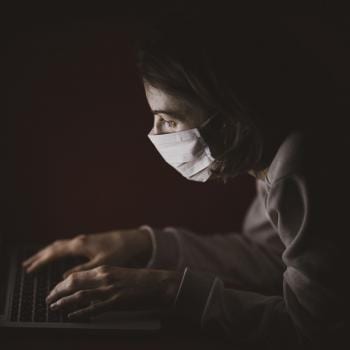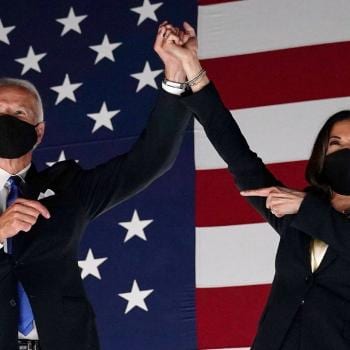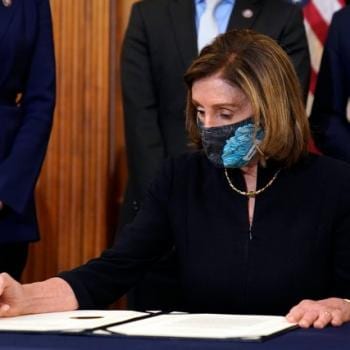We need to talk about the sixteen-year-old South Carolina girl thrown from her desk by a police officer this week. First, some background:
Tony Robinson Jr., who recorded the final moments, said it all began when the teacher asked the girl to hand over her phone during class. She refused, so he called an administrator, who summoned the officer.
“The administrator tried to get her to move and pleaded with her to get out of her seat,” Robinson told WLTX. “She said she really hadn’t done anything wrong. She said she took her phone out, but it was only for a quick second, you know, please, she was begging, apologetic.”
“Next, the administrator called Deputy Fields in. … He asked, ‘Will you move?’ and she said ‘No, I haven’t done anything wrong,'” Robinson said.
“When I saw what was going to happen, my immediate first thing to think was, let me get this on camera. This was going to be something … that everyone else needs to see, something that we can’t just let this pass by.”
Districts across the country put officers in schools after teenagers massacred fellow students at Columbine High School in Colorado in 1999. Schools now routinely summon police to discipline students, experts say.
“Kids are not criminals, by the way. When they won’t get up, when they won’t put up the phone, they’re silly, disobedient kids — not criminals,” said John Whitehead, founder of the Rutherford Institute, a nonprofit civil liberties and human rights organization.
You can see the video in this clip here:
https://www.youtube.com/watch?v=-QXqD2HsxAQIt turns out that the girl’s mother just died and she is currently living in foster care.
Also, it is being reported that the officer in question is a “school resource officer,” one of two assigned to the school. Can I say how uncomfortable this makes me, as a mother? What happened to trying to work with students and help them grow in positive and productive ways? Now we skip all that and go straight to criminalizing them? And can I say how understandable it is that the girl had her phone out, given her recent loss? Aren’t teachers supposed to take these sorts of things into account, and to serve as mentors to needy students like this one?
Let’s not ignore the role race plays here, or the fact that this has happened before.
News surrounding a confrontation in a Baltimore school is raising new questions about the role race plays in discipline for black girls. Baltimore television station WBAL has been reporting on an October incident that led to three students at the city’s Vanguard Middle School being injured, and later arrested and suspended, after an altercation with a school security officer.
School officials have supported the officer’s assertion that she was attacked, kicked and punched by the girls, but the school’s security tape shows something more complicated. By the end of the incident, the officer had struck one of the girls repeatedly with her baton — causing an injury that required multiple stitches — and pepper sprayed the two others. All three girls required treatment at a hospital.
The problem is systemic.
It’s just one incident of many that have played out across the country in which reported misconducted by black girls at school prompts a seemingly disproportionate — and often violent — response by school and local authorities.
But why? That’s what Columbia University law professor Kimberle Williams Crenshaw and her associates, Priscilla Ocen and Jyoti Nanda, set out to explain in their study, Black Girls Matter: Pushed Out, Overpoliced and Underprotected.
They examined data from public schools in Boston and New York City, and the results are startling: Girls of color, and especially black girls, are subject to discipline that is harsher and more frequent than that of their white peers, and are six times more likely to be suspended than white girls. The racial disparities in punishment are greater for girls than for boys.
Racialized discipline and the criminalization of children affects black boys as well as black girls. Let’s not forget this video from earlier this month:
But as Crenshaw and her colleagues point out in their study, the ways black girls are affected by this policing—and pushed out of school—are less discussed and less well understood than the way boys are affected. According to Crenshaw:
Our study sheds light on the reality that black girls, as well as some other girls of color, face disproportionately high rates of suspension and expulsion. In fact, the disparity in punishment between black girls and white girls is greater than the disparity between black and white boys. Across the country, black girls are six times more likely to be suspended than white girls, whereas black boys are three times more likely to be suspended than their white counterparts.
Suspension and expulsion are tied to a host of short- and long-term consequences. For some students, zero-tolerance policies in schools lead directly to involvement in the criminal justice system. Some of the girls in our study, for example, were arrested in connection to school fights. For others, the pathways from school push-out lead to confinement, low-wage work, economic insecurity and other hardships.
There is no reason, then, to leave girls out of the conversation about the policies that create pathways to nowhere. Most importantly, there is no reason to assume that initiatives designed to disrupt these negative outcomes need not include girls. Girls are subject to many of the same conditions that confront boys, and others that are different. For instance, one young woman we worked with told us that she was arrested and incarcerated for truancy. And she is far from alone.
As I’ve used google to look for various materials for this article, I’ve noticed that a lot of articles are drawing ties to the school-to-prison pipeline and pointing out the disproportionate problems faced by girls of color. One such article was titled “She was guilty of being a black girl: The mundane terror of police violence in American schools.” I’m glad to see attention turning to this issue. We have got to fix how schools approach both black boys and black girls. The problem of racism in our schools has understandably led some black parents to turn to homeschooling, but that solution isn’t workable for the vast majority of black students in our schools today.
We need to stop criminalizing young people of color.
As we discuss this issue, let’s not forget that the unidentified South Carolina teen was not the only black girl arrested Monday. Eighteen-year-old Niya Kenny Kenny was also arrested during the same incident.
“I know this girl don’t got nobody and I couldn’t believe this was happening,” Kenny explained. “I had never seen nothing like that in my life, a man use that much force on a little girl. A big man, like 300 pounds of full muscle. I was like ‘no way, no way.’ You can’t do nothing like that to a little girl. I’m talking about she’s like 5’6″.”
. . .
“I was screaming ‘What the f, what the f is this really happening?’ I was praying out loud for the girl,” says Kenny. “I just couldn’t believe this was happening I was just crying and he said, since you have so much to say you are coming too. I just put my hands behind my back.”
Her mother Doris Kenny was shocked and upset when she saw the video.
“My child, and I’m not mad at her, she was brave enough to speak out against what was going on and didn’t back down and it resulted in her being arrested,” says Doris Kenny.
Recording the incident was actually Niya’s idea. Perhaps it is our ability to capture these moments—or rather, black teens‘ ability to capture these moments—that has the most potential to create change on this issue. People may deride “kids these days” with their cell phones and selfies, but those cell phones offer those kids power, and increased space for exercising their agency. Tony Robinson Jr. and Niya Kenny—the teens who recorded the incident and have since spoken out about what happened to the media—are the true heroes here.














